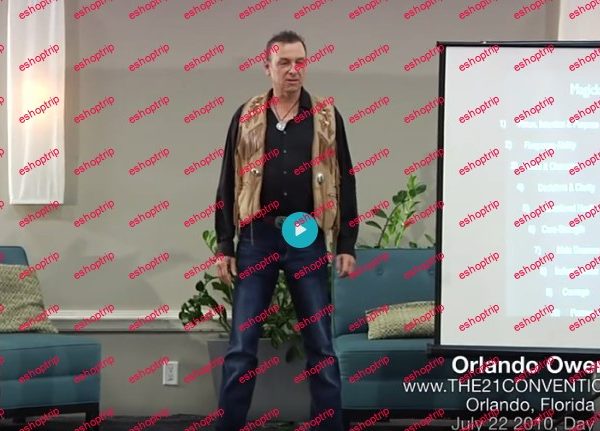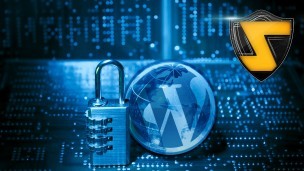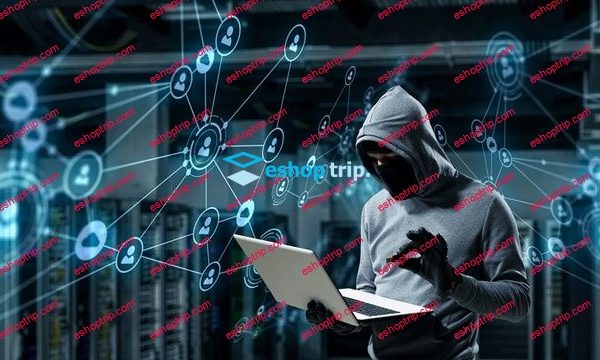Genre: eLearning | Language: English
Why is digital forensics so important? In today’s digital world, every organization is bound to be attacked and likely breached by a cyber adversary. Forensics can be used to determine if and how a breach occurred and also how to properly respond.
Digital Forensics and Cyber Crime with Kali Linux Fundamentals LiveLessons introduces you to the world of digital forensics and acts as a primer for your future forensic work. This is a fundamentals course with a focus on the average network engineer, so you don’t need to be an IT expert to follow most of the concepts. Learn when a breach occurs, what actions you can take, and how to learn from the breach to prevent future attacks. This video course focuses on using open source technology available in the Kali Linux framework along with other tools to simplify forensic tasks. You will master the basics of digital forensics, learn best practices, and explore legal and forensic service concepts.
About the Instructors
Joseph Muniz is an architect at Cisco Systems and security researcher. He has extensive experience in designing security solutions and architectures for the top Fortune 500 corporations and the U.S. government. Examples of Joseph’s research is his RSA talk titled Social Media Deception quoted by many sources found by searching Emily Williams Social Engineering as well as articles in PenTest Magazine regarding various security topics. Joseph runs thesecurityblogger website, a popular resource for security and product implementation. He is the author and contributor of several publications including titles on building security operations centers (SOC)s, CCNA cyber ops certification, web penetration testing, and hacking with raspberry pi. Follow Joseph at www.thesecurityblogger.com and @SecureBlogger.
Aamir Lakhani is a leading senior security strategist. He is responsible for providing IT security solutions to major enterprises and government organizations. Mr. Lakhani creates technical security strategies and leads security implementation projects for Fortune 500 companies. Aamir has designed offensive counter-defense measures for the Department of Defense and national intelligence agencies. He has also assisted organizations with safeguarding IT and physical environments from attacks perpetrated by underground cybercriminal groups. Mr. Lakhani is considered an industry leader for creating detailed security architectures within complex computing environments. Writing under the pseudonym Dr. Chaos, Mr. Lakhani also operates the popular security social media blog, which is hosted at DrChaos.com. In its recent list of 46 Federal Technology Experts to Follow on Twitter, Forbes magazine described Aamir Lakhani as “a blogger, InfoSec specialist, super hero‚Ķand all around good guy.”
Coverage includes:
Lesson 1: Introduction to Digital Forensics
Lesson 2: Digital Forensic Investigations
Lesson 3: Getting Started with a Forensic Linux Workstation
Lesson 4: Data Duplication and Data Protection
Lesson 5: Collecting and Preserving Evidence
Lesson 6: Cracking Passwords
Lesson 7: Windows Forensics
Lesson 8: Network Forensics
Lesson 9: Email Forensics
Lesson 10: Reverse Malware Engineering
Lesson 11: Forensic Case Studies
Skill Level
All levels
Learn How To
Plan, organize, build, and deploy end-to-end IoT solutions
Navigate today’s IoT product marketplace
Use maturing IoT technologies to solve many business and technical problems
Make sense of the full IoT protocol stack, from 802.15.4 and LPWA to IPv6 adaptations and management
Architect IoT networks for maximum security and integrity
Generate meaningful intelligence from the data your smart objects capture
Compare and use batch-level and real-time streaming analytics
Improve IoT system efficiency through fog and edge computing
Leverage key IoT applications for utilities, transportation, manufacturing, smart cities, public safety, oil/gas production, and mining
Who Should Take This Course
Any network or security professional who is concerned about being breached by a cyber threat. This includes people looking to develop an incident response plan, anyone with an interest in digital forensics, network engineers looking to beef up their security knowledge, and people involved with cyber security work.
Course Requirements
Requires basic knowledge of Internet and networking technology.
Table of Contents
Lesson 1: Introduction to Digital Forensics
Lesson 2: Digital Forensic Investigations
Lesson 3: Getting Started with a Forensic Linux Workstation
Lesson 4: Data Duplication and Data Protection
Lesson 5: Collecting and Preserving Evidence
Lesson 6: Cracking Passwords
Lesson 7: Windows Forensics
Lesson 8: Network Forensics
Lesson 9: Email Forensics
Lesson 10: Reverse Malware Engineering
Lesson 11: Forensic Case Studies
Filelist:
01 – Digital Forensics and Cyber Crime …roduction.mp4
02 – Learning objectives.mp4
03 – Why forensics.mp4
04 – Cyber crime.mp4
05 – Introduction to digital forensics.mp4
06 – Summary.mp4
07 – Learning Objectives.mp4
08 – 2.1 Overview of digital forensics.mp4
09 – 2.2 Outsourcing vs. providing in-h… services.mp4
10 – 2.3 Search and seizure overview.mp4
11 – 2.4 Basic forensics lab.mp4
12 – 2.5 Forensic tool overview.mp4
13 – 2.6 Collecting evidence.mp4
14 – 2.7 Steganography and images.mp4
15 – 2.8 Preserving and reviewing digital evidence.mp4
16 – 2.9 Packaging evidence.mp4
17 – 2.10 Forensic reports.mp4
18 – Summary.mp4
19 – Learning objectives.mp4
20 – 3.1 Downloading Kali Linux.mp4
21 – 3.2 Creating and running Kali Linux.mp4
22 – 3.3 Running Kali Linux Virtual Machine.mp4
23 – 3.4 Updating and installing Forensic Packages.mp4
24 – 3.5 Kali Linux as a Forensic Workstation.mp4
25 – Summary.mp4
26 – Learning objectives.mp4
27 – 4.1 Pre duplication.mp4
28 – 4.2 Forensic Images.mp4
29 – 4.3 Image Types.mp4
30 – 4.4 RAID.mp4
31 – 4.5 Kali Disk Duplication.mp4
32 – 4.6 Windows Disk Duplication.mp4
33 – Summary.mp4
34 – Learning objectives.mp4
35 – 5.1 Introduction to Collecting and Preserving.mp4
36 – 5.2 Hashing.mp4
37 – 5.3 Preserving Data.mp4
38 – 5.4 Linux Tools.mp4
39 – Summary.mp4
40 – Learning objectives.mp4
41 – 6.1 Password cracking concepts.mp4
42 – 6.2 Password cracking tools.mp4
43 – 6.3 Windows passwords.mp4
44 – 6.4 Linux _ OSX passwords.mp4
45 – Summary.mp4
46 – Learning objectives.mp4
47 – 7.1 File system overview.mp4
48 – 7.2 Shortcut files.mp4
49 – 7.3 Recycle bin.mp4
50 – 7.4 Info and spool files.mp4
51 – 7.5 Registry Part 1.mp4
52 – 7.6 Registry Part 2.mp4
53 – 7.7 Registry by OS.mp4
54 – 7.8 Registry Part 3.mp4
55 – 7.9 Registry Forensics.mp4
56 – 7.10 Registry investigations.mp4
57 – 7.11 FTK registry viewer.mp4
58 – Summary.mp4
59 – Learning objectives.mp4
60 – 8.1 Networks.mp4
61 – 8.2 Security Tools.mp4
62 – 8.3 Firewalls.mp4
63 – 8.4 Content Filtering.mp4
64 – 8.5 Breach and Honeypots.mp4
65 – 8.6 Network Access Control.mp4
66 – 8.7 Netflow.mp4
67 – 8.8 Data Loss Prevention.mp4
68 – 8.9 Network Attacks.mp4
69 – 8.10 Detecting Threats.mp4
70 – 8.11 Snort Part 1.mp4
71 – 8.12 Snort Part 2.mp4
72 – 8.13 Network Logs.mp4
73 – Summary.mp4
74 – Learning objectives.mp4
75 – 9.1 Email system and clients.mp4
76 – 9.2 Investigating email.mp4
77 – 9.3 Email forensic tools.mp4
78 – Summary.mp4
79 – Learning objectives.mp4
80 – 10.1 Introduction to malware analysis.mp4
81 – 10.2 Static analysis.mp4
82 – 10.3 Static analysis tools.mp4
83 – 10.4 Static analysis PDF.mp4
84 – 10.5 Dynamic analysis.mp4
85 – Summary.mp4
86 – Learning objectives.mp4
87 – 11.1 Investigating a laptop for HR.mp4
88 – 11.2 Investigating a network breach.mp4
89 – 11.3 Investigating a hard drive from eBay.mp4
90 – 11.4 Complete legal example.mp4
91 – Summary.mp4
92 – Digital Forensics and Cyber Crime …- Summary.mp4
Move to folder:











Reviews
There are no reviews yet.